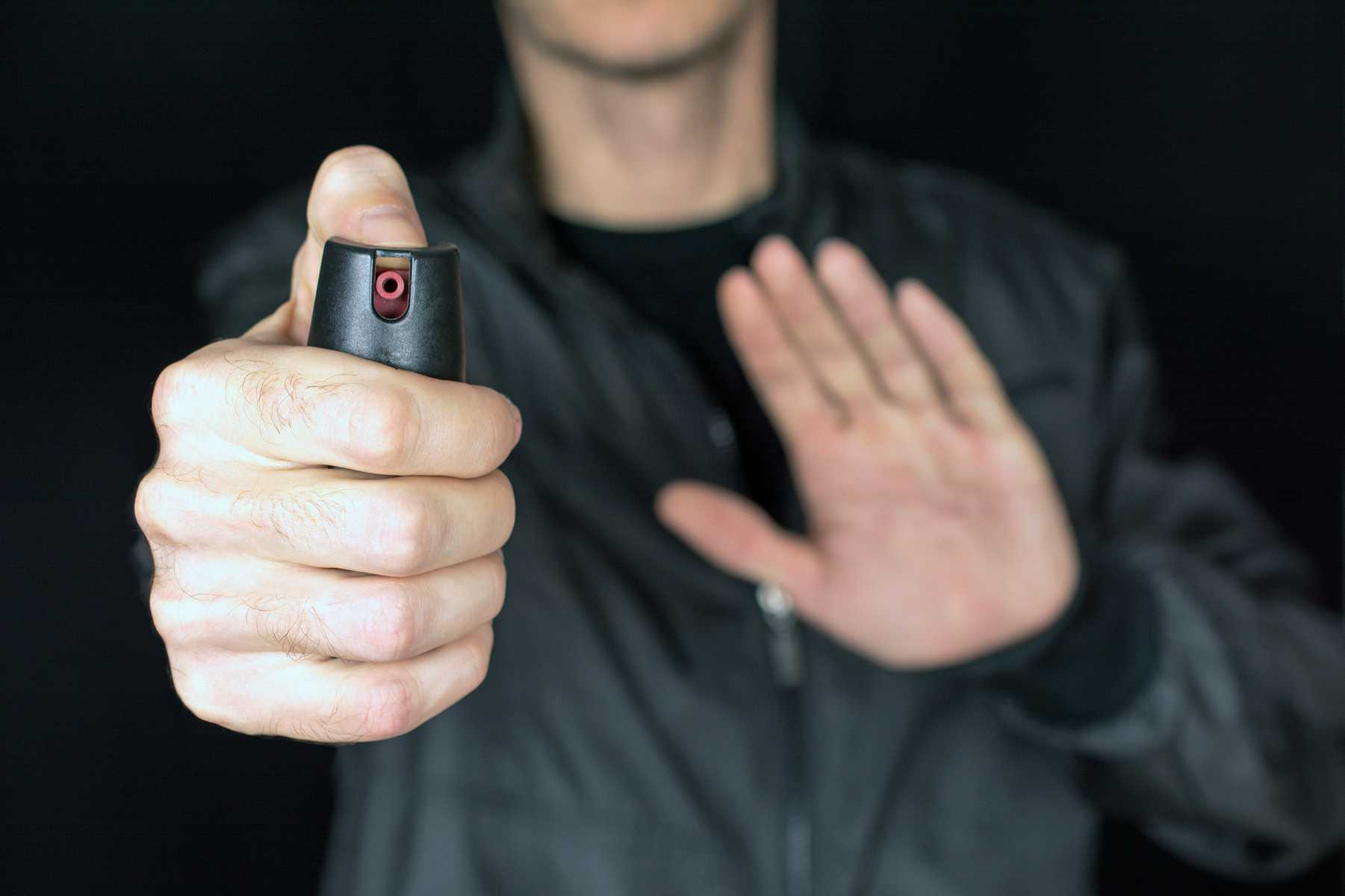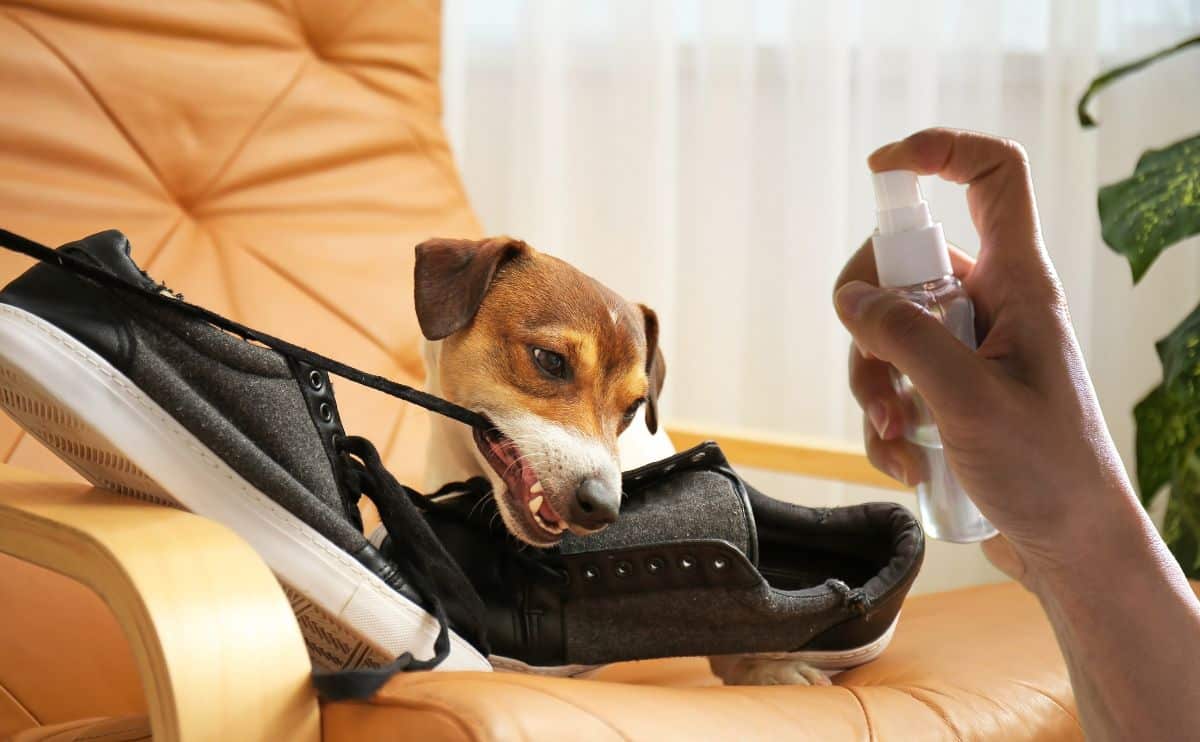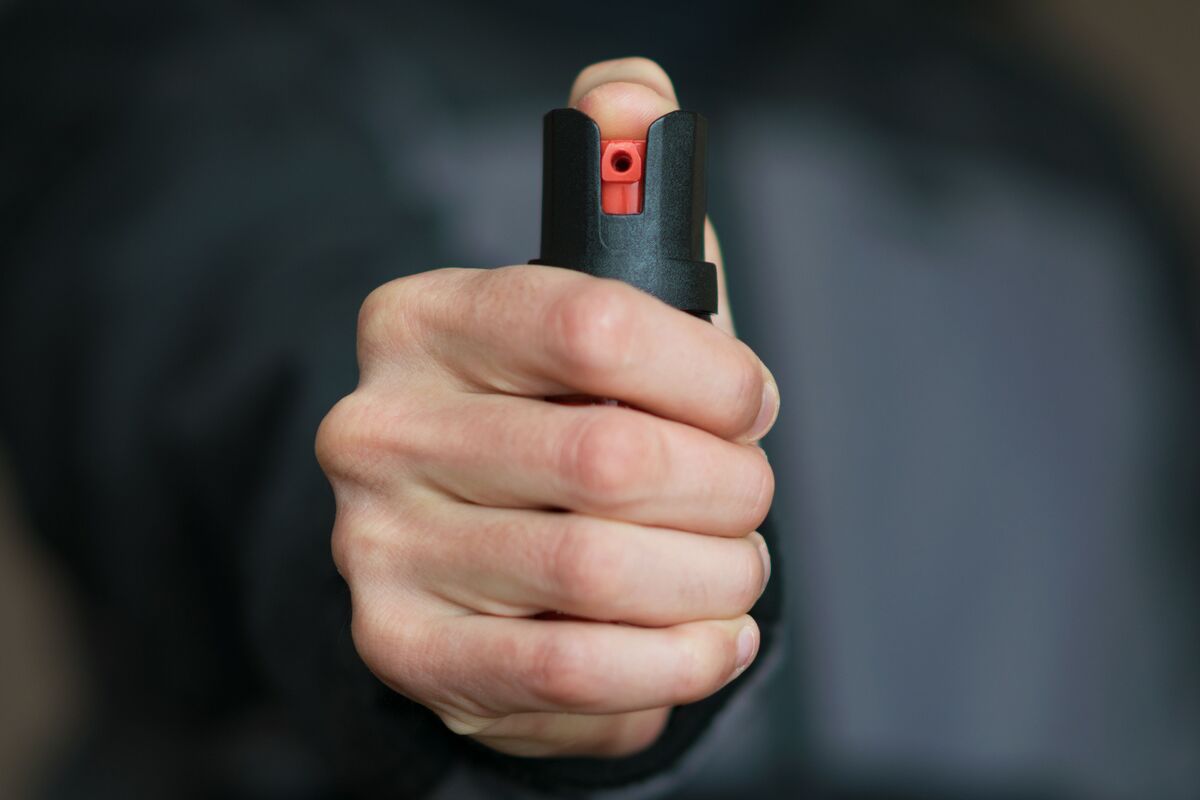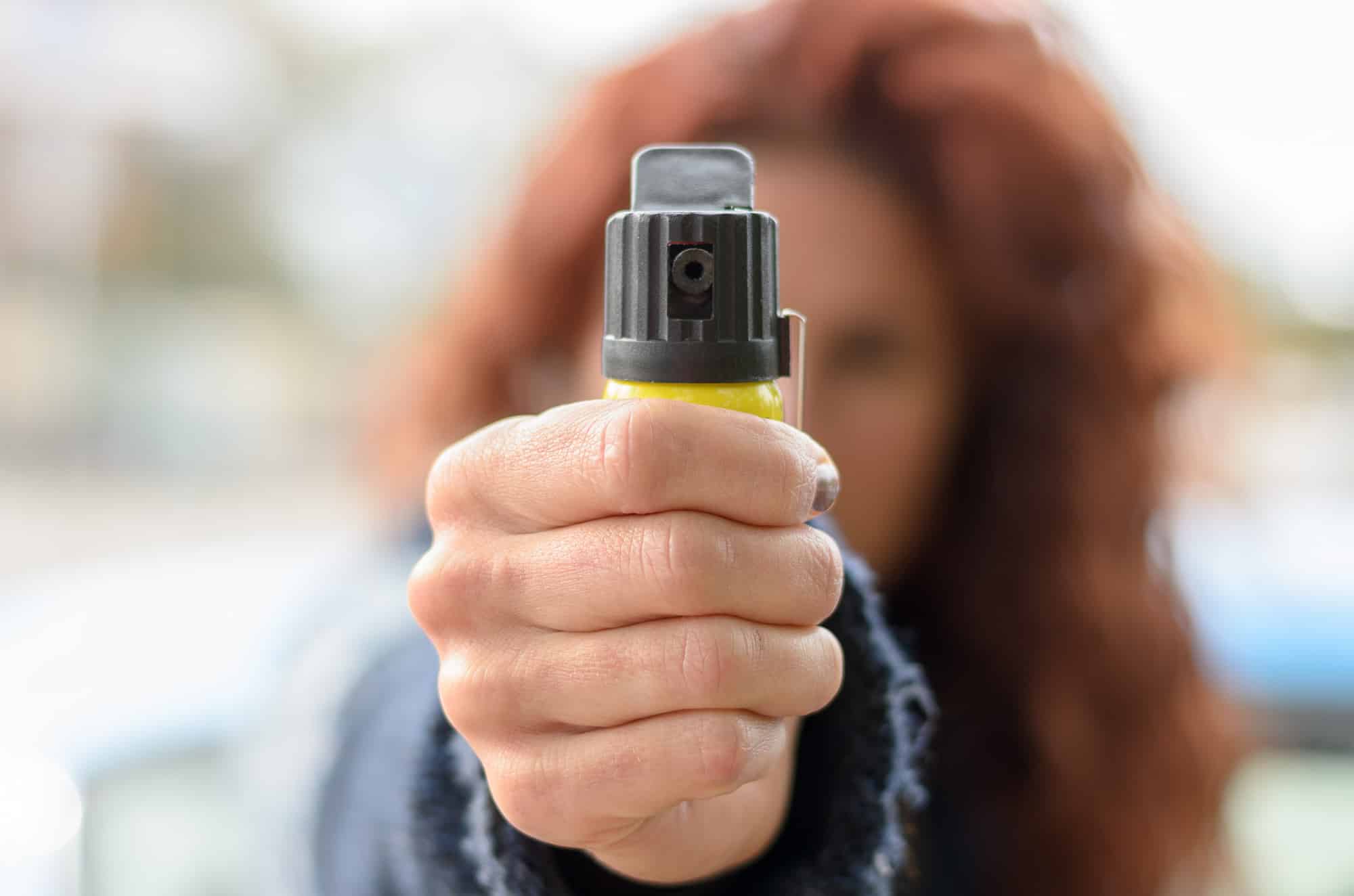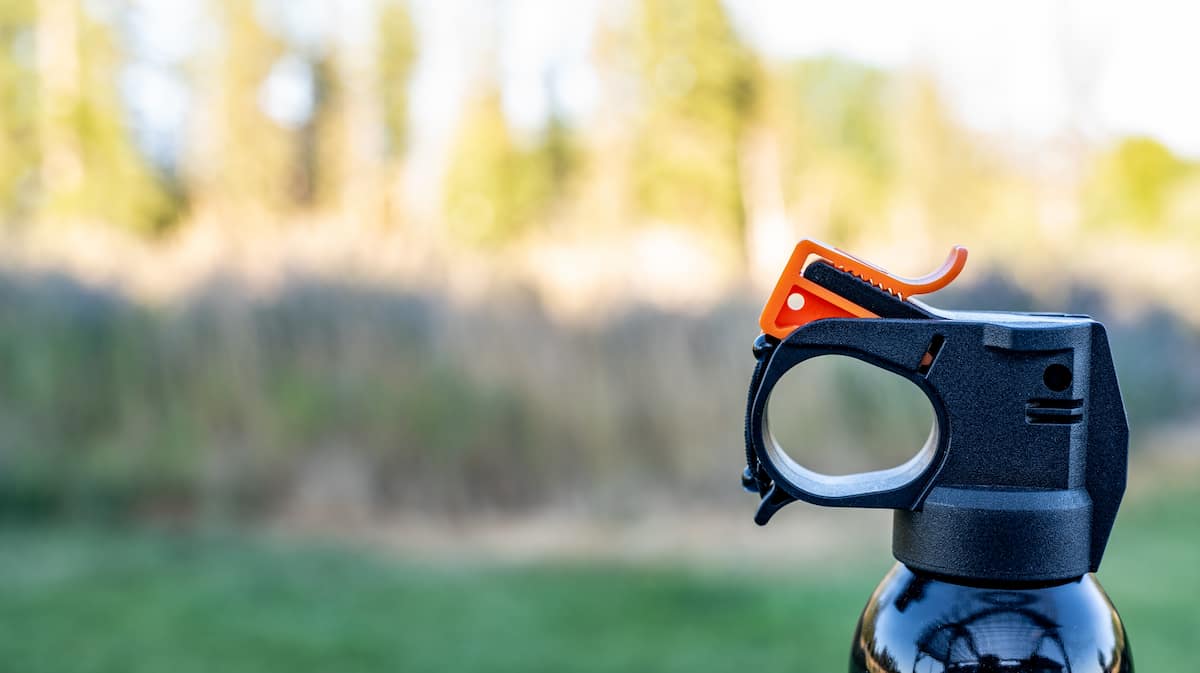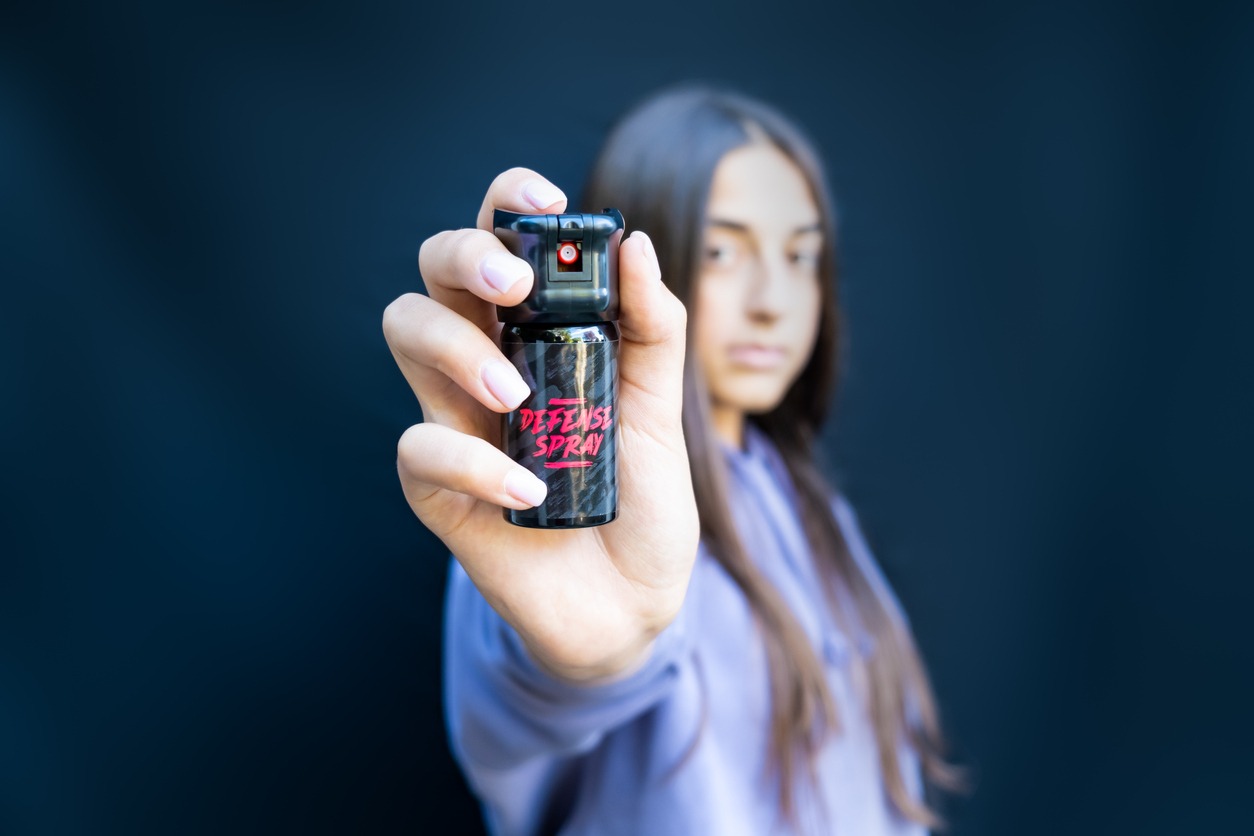Home>Home Security and Surveillance>What Happens When You Pepper Spray A Dog
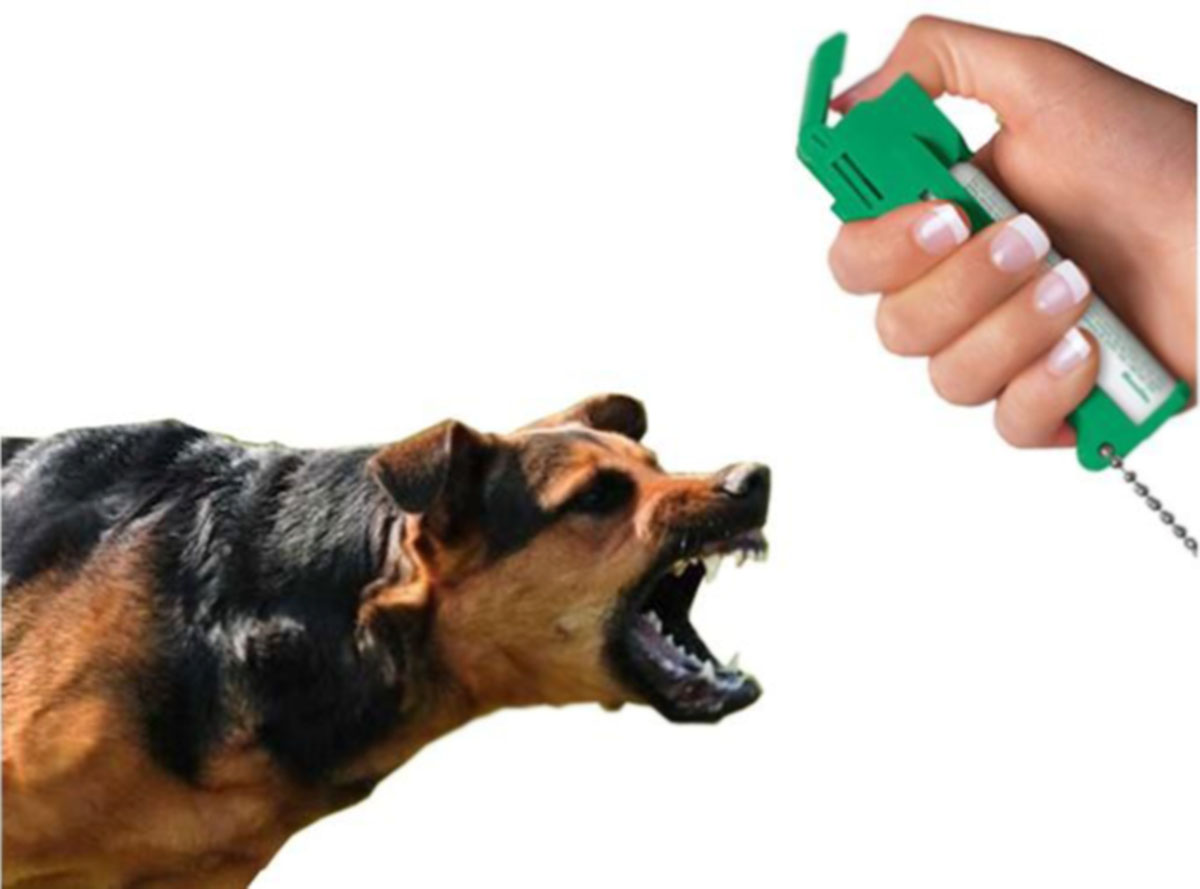

Home Security and Surveillance
What Happens When You Pepper Spray A Dog
Modified: March 6, 2024
Discover the effects of pepper spray on dogs and how it can enhance your home security and surveillance measures. Protect your property and loved ones with this effective deterrent.
(Many of the links in this article redirect to a specific reviewed product. Your purchase of these products through affiliate links helps to generate commission for Storables.com, at no extra cost. Learn more)
Introduction
Home security and surveillance are top priorities for many homeowners seeking to protect their families and belongings. One aspect of home security that often raises concerns is how to handle encounters with aggressive or dangerous animals, particularly dogs. While it’s always best to avoid confrontations with aggressive dogs, sometimes self-defense measures become necessary. One such measure is the use of pepper spray. In this article, we will explore what happens when you pepper spray a dog, including the purpose of pepper spray, dogs’ reactions, potential risks, proper usage, and alternatives to consider.
Key Takeaways:
- Pepper spray is a non-lethal tool designed to temporarily disable aggressive dogs, allowing individuals to escape dangerous situations. Responsible use and understanding dogs’ reactions are crucial for effective self-defense.
- While pepper spray can deter aggressive dogs, it’s important to consider alternatives like ultrasonic devices and citronella spray. Prioritize personal safety, understand local laws, and seek professional guidance when dealing with aggressive dogs.
Read more: What Happens If You Eat Pepper Spray
The Purpose of Pepper Spray
Pepper spray is a self-defense tool commonly used by individuals to protect themselves from potential harm, including aggressive dogs. It is a non-lethal spray made from capsicum, the active component of chili peppers. When sprayed in the eyes, nose, or mouth of an attacker, pepper spray causes immediate and intense irritation, leading to temporary incapacitation.
The purpose of pepper spray is to provide a means of disabling an aggressive animal, such as a dog, without causing permanent harm or injury. It offers a way to protect oneself from a potential attack while minimizing harm to both the animal and the person using it. Pepper spray is designed to provide a window of opportunity for the individual to escape the dangerous situation, allowing them to seek help or find a safe place away from the aggressive animal.
Pepper spray is available in various formulations and strengths, with different ranges and spray patterns. Some sprays are specifically designed for use against animals, including dogs, while others are intended for human targets. It is essential to select a pepper spray specifically labeled for use on dogs to ensure its effectiveness and safety.
It’s important to emphasize that pepper spray should only be used as a last resort in situations where there is a genuine threat of harm. It is not meant for offensive or aggressive purposes and should never be used to provoke or antagonize animals. Responsible usage and understanding its limitations are key to ensuring the safety of both the user and the animal involved.
Understanding Dogs’ Reactions to Pepper Spray
When pepper spray is used on a dog, its effects can vary depending on factors such as the dog’s size, breed, health condition, and the concentration of the spray. While dogs typically have a more sensitive sense of smell and eyesight than humans, their reaction to pepper spray is similar to that of humans.
When a dog is exposed to pepper spray, the capsaicin in the spray affects the membranes of the dog’s eyes, nose, and throat. This causes intense irritation, burning, and pain, leading to temporary blindness, difficulty breathing, and disorientation. The dog may also experience excessive drooling as a result of the irritation.
It’s important to note that different dogs may react in different ways to pepper spray. Some dogs may immediately retreat or show signs of submission, while others may become more agitated and aggressive. This unpredictability is why it’s crucial to use pepper spray responsibly and as a last resort in self-defense situations.
Furthermore, the duration of the dog’s reaction to pepper spray can also vary. In most cases, the effects last for around 30 minutes to an hour, but it is possible for the effects to persist for a longer time. It’s important to give the dog sufficient time to recover and seek proper veterinary care if necessary after being sprayed with pepper spray.
It’s worth noting that certain dog breeds may have a higher tolerance to the effects of pepper spray due to their genetic makeup or training. Some larger and more aggressive breeds may be less affected and could potentially pose a continued threat, even after being sprayed. Therefore, it’s crucial to understand that while pepper spray can be an effective temporary deterrent, it may not guarantee complete incapacitation of all dogs.
It’s essential to remember that using pepper spray on a dog should always be a last resort in a situation where you or others are in imminent danger. It should not be used as a means of punishment or to provoke animals unnecessarily. Responsible use and understanding of its limitations are crucial to ensure the safety of both humans and dogs involved in the encounter.
Potential Dangers and Risks
While pepper spray can be an effective tool for self-defense against aggressive dogs, it is important to understand and acknowledge the potential dangers and risks associated with its use.
One primary concern is the possibility of overusing or using an excessive amount of pepper spray on a dog. Spraying an excessive amount can lead to prolonged discomfort and potential injury to the dog. It’s crucial to adhere to the recommended spray duration and avoid multiple continuous sprays, as this can exacerbate the dog’s distress and prolong their recovery time.
Another risk is the potential for bystanders, including yourself, to be affected by the spray. Pepper spray can disperse in the air, and wind can carry it to unintended targets. This is particularly important to consider in crowded areas or situations where there are other individuals in close proximity. To minimize the risk of accidental exposure, it’s essential to ensure proper distance and consider the direction of the wind when using pepper spray.
It’s also important to recognize that not all dogs may react uniformly to pepper spray. While many dogs experience temporary discomfort and disorientation, some dogs may not be as affected due to their tolerance or training. In these cases, other defensive measures may be necessary to ensure personal safety.
Another potential danger is the risk of escalation. Some dogs, especially if they are highly agitated or in a heightened state of aggression, may become even more aggressive or erratic in response to the pepper spray’s effects. This can pose a risk to both the individual using the spray and any nearby bystanders. It is vital to have an exit strategy and seek safety after deploying pepper spray.
Lastly, using pepper spray on a dog may have legal implications. It is important to familiarize yourself with the laws and regulations regarding the use of pepper spray on animals in your specific area. Some jurisdictions may restrict or prohibit the use of certain types of pepper spray on animals, or there may be requirements for reporting incidents involving the use of pepper spray on dogs.
Understanding these potential dangers and risks associated with using pepper spray on dogs is crucial for responsible and effective self-defense. It’s important to weigh the potential benefits against the potential risks, considering alternative options and seeking professional guidance if necessary.
Proper Use and Application of Pepper Spray on Dogs
When it comes to using pepper spray on dogs, proper technique and responsible application are essential to ensure safety for both the user and the animal. Here are some guidelines for the proper use of pepper spray on dogs:
- Stay Calm and Assess the Situation: Before resorting to the use of pepper spray, try to remain calm and evaluate the threat level posed by the dog. It’s always best to avoid confrontation whenever possible.
- Maintain Distance: It’s important to maintain a safe distance from the aggressive dog. Pepper spray usually has a recommended effective range, so ensure that you are within that range for optimal efficacy.
- Take Aim at the Dog’s Face: When applying pepper spray, aim directly at the dog’s face, specifically the eyes and nose. This is where the spray will have the greatest impact and induce the most discomfort.
- Spray in Short Bursts: Use short bursts of pepper spray, rather than continuous spraying, to conserve the amount used and avoid overexposure. Follow the instructions provided by the manufacturer regarding the recommended duration of spray.
- Consider Wind Direction: Be mindful of the wind direction to minimize the risk of accidental exposure to yourself or others. Position yourself upwind or at a safe angle to prevent the spray from blowing back towards you.
- Escape to Safety: After deploying the pepper spray, retreat to a safe location to avoid potential harm from the dog. It’s important to seek medical attention if you or anyone else involved in the encounter is injured.
- Report the Incident: Depending on your location and local regulations, it may be necessary to report the incident to the appropriate authorities. Familiarize yourself with the legal requirements in your area regarding the use of pepper spray on animals.
It’s important to remember that the use of pepper spray should always be a last resort when facing a potentially dangerous situation with an aggressive dog. Understanding its proper use and limitations is crucial for the effective and responsible use of pepper spray in self-defense.
If you need to use pepper spray on a dog, aim for the face and eyes to create a temporary discomfort and give you time to get away safely. Always try to avoid using it if possible.
Read more: What Happens If You Pepper Spray A Raccoon
Aftermath and Post-Spray Care
After using pepper spray on a dog, it’s important to take post-spray care measures to ensure the well-being of both the dog and yourself. Here are some guidelines to follow:
- Assess the Dog’s Condition: After deploying pepper spray, observe the dog from a safe distance. Ensure that you are out of harm’s way and assess whether the spray has effectively deterred the dog.
- Seek Medical Attention if Necessary: If you or anyone else involved in the encounter has sustained injuries, seek immediate medical attention. It’s important to prioritize personal safety and address any physical harm caused by the aggressive dog.
- Do Not Approach the Dog: It’s crucial to avoid approaching or touching the dog after it has been sprayed. The dog may still be agitated or aggressive, and it’s best to keep a safe distance until the effects of the spray have worn off.
- Allow Time for Recovery: Pepper spray effects on dogs are typically temporary and can last between 30 minutes to an hour. Give the dog sufficient time to recover and regain normal function. Avoid further interactions with the dog during this period.
- Monitor and Seek Veterinary Care: If the dog shows signs of distress or prolonged discomfort, such as excessive drooling, difficulty breathing, or ongoing aggression, contact a veterinarian for further guidance. They can assess the dog’s condition and determine if any additional treatment is necessary.
- Properly Dispose of the Pepper Spray: Dispose of any remaining pepper spray canisters or containers safely and in accordance with local regulations. Follow the manufacturer’s instructions or consult local authorities for proper disposal methods.
- Reflect and Learn: Take the opportunity to reflect on the encounter and learn from it. Assess if there were any steps you could have taken to avoid or de-escalate the situation and consider alternative methods of self-defense or dog deterrents for future situations.
It’s important to remember that the aftermath of deploying pepper spray on a dog requires responsible actions and consideration for the well-being of all parties involved. Focus on personal safety, observe the dog from a safe distance, and seek appropriate medical attention if needed.
Legal Considerations and Regulations
When it comes to using pepper spray on dogs, it’s crucial to familiarize yourself with the legal considerations and regulations in your jurisdiction. Here are some key points to keep in mind:
- Check Local Laws: Laws regarding the use of pepper spray on animals can vary from one jurisdiction to another. Research and understand the specific regulations in your area to ensure compliance with the law.
- Restrictions on Pepper Spray Formulations: Some jurisdictions may place restrictions on the type of pepper spray formulations that can be used on animals. Ensure that the pepper spray you intend to use on dogs complies with the legal requirements specific to animal use.
- Reporting Incidents: Depending on local regulations, it may be necessary to report incidents involving the use of pepper spray on dogs to the appropriate authorities. Be aware of the reporting requirements and follow the necessary procedures if mandated.
- Use of Reasonable Force: Many jurisdictions permit the use of reasonable force for self-defense purposes. It’s important to understand the definition and scope of “reasonable force” as outlined in local laws to ensure that your actions align with legal requirements.
- Consider Non-Lethal Alternatives: While pepper spray can be an effective deterrent, consider exploring non-lethal alternatives to pepper spray for dog defense. Some areas may have specific regulations on the use of certain self-defense tools, such as noise deterrent devices or citronella sprays.
- Training and Certification: In some jurisdictions, individuals may be required to undergo training or obtain specific certifications to legally carry and use pepper spray. Research whether any regulatory requirements exist in your area and ensure compliance.
- Legal Defense: It’s advisable to consult with legal professionals knowledgeable in self-defense laws in your jurisdiction if you have any concerns or questions regarding the legal implications of using pepper spray on dogs.
Remember that laws can change, so it’s essential to stay updated on any revisions or amendments to the regulations regarding the use of pepper spray on animals. Respecting and adhering to the legal considerations ensures that you are acting within the boundaries of the law while protecting yourself and others from aggressive dogs.
Alternatives to Pepper Spray for Dog Defense
While pepper spray can be an effective tool for self-defense against aggressive dogs, there are alternative methods and products that can be used to deter or manage encounters with aggressive canines. Here are some alternatives to consider:
- Ultrasonic Dog Deterrents: Ultrasonic devices emit high-frequency sounds that are unpleasant to dogs but are typically inaudible to humans. These devices can be used to deter dogs from approaching or to interrupt aggressive behavior.
- Citronella Spray: Citronella spray is a non-toxic and environmentally friendly alternative to pepper spray. It emits a burst of citronella scent that dogs find unpleasant, deterring them from approaching or engaging in aggressive behavior.
- Noise Deterrents: Loud noises, such as a personal alarm, whistle, or air horn, can startle and deter dogs. These noise deterrents can be effective in diverting the dog’s attention or startling them, giving you an opportunity to retreat to safety.
- Sticks or Umbrellas: Carrying a sturdy stick or an umbrella with a pointed end can serve as a visual deterrent and a physical barrier between you and an aggressive dog. Use it to keep a safe distance or to block the dog’s approach if necessary.
- Body Language and Commands: Dogs are highly attuned to body language and vocal commands. Projecting confidence, standing tall, and using assertive but not aggressive commands can help assert your authority and potentially influence the dog’s behavior.
- Professional Dog Repellents: There are commercially available dog repellent sprays specifically designed to deter aggressive dogs. These products emit a strong odor or taste that dogs find unpleasant, discouraging them from approaching or engaging in aggressive behavior.
- Professional Training and Behavior Modification: Seeking guidance from a professional dog trainer or behaviorist can help address underlying issues causing aggressive behavior in dogs. By implementing appropriate training techniques and behavior modification strategies, it is possible to manage and reduce aggressive tendencies.
It’s important to note that the effectiveness of these alternative methods may vary depending on the specific dog and the circumstances. Assess the situation carefully and choose the method that feels most appropriate and safe for you.
Remember, personal safety should always be the top priority. If you find yourself in a situation where an aggressive dog poses an immediate threat, and you do not have access to any of these alternatives, using pepper spray as a last resort may be necessary for self-defense.
Conclusion
When it comes to dealing with aggressive dogs, prioritizing personal safety is paramount. Pepper spray can be an effective tool for self-defense, offering a non-lethal means of deterring dangerous animals. However, it is important to understand the purpose, proper use, and potential risks associated with pepper spray.
Pepper spray provides a means of temporary incapacitation, allowing individuals to escape potentially dangerous situations involving aggressive dogs. It is crucial to use pepper spray responsibly and as a last resort, always attempting to avoid confrontation whenever possible.
Understanding dogs’ reactions to pepper spray is important. While most dogs will experience temporary discomfort and disorientation when exposed to pepper spray, individual reactions can vary. Some dogs may not be as affected or may exhibit heightened aggression in response to the spray, highlighting the need for caution and an exit strategy.
Furthermore, it is necessary to consider the potential dangers and risks associated with using pepper spray on dogs. Overuse, accidental exposure to bystanders, and the possibility of escalation are all factors to be mindful of. Adhering to proper usage techniques and understanding local laws and regulations is crucial for responsible and legal use.
Alternatives to pepper spray should also be explored. Ultrasonic devices, citronella spray, noise deterrents, and professional training are all viable options to consider in dog defense situations. It’s essential to assess each situation and choose the most appropriate method or tool for your specific circumstances.
In conclusion, pepper spray can be an effective tool for self-defense in encounters with aggressive dogs. However, responsible use, understanding of dogs’ reactions, knowledge of potential risks, and consideration of alternatives are all necessary components for the safe and effective utilization of pepper spray. Prioritize personal safety, stay informed about local laws and regulations, and always seek professional guidance if needed in dealing with aggressive dogs.
Frequently Asked Questions about What Happens When You Pepper Spray A Dog
Was this page helpful?
At Storables.com, we guarantee accurate and reliable information. Our content, validated by Expert Board Contributors, is crafted following stringent Editorial Policies. We're committed to providing you with well-researched, expert-backed insights for all your informational needs.



